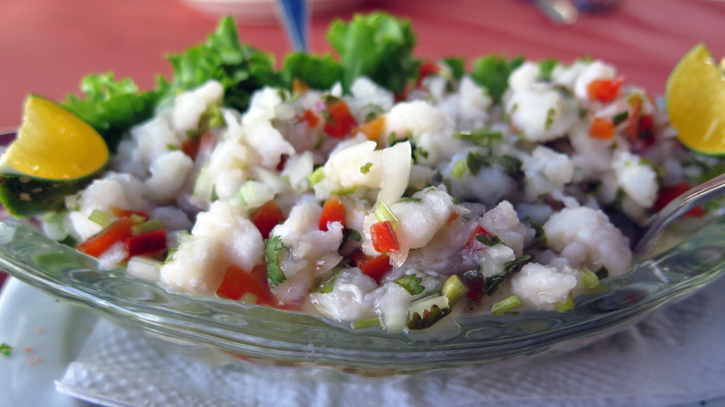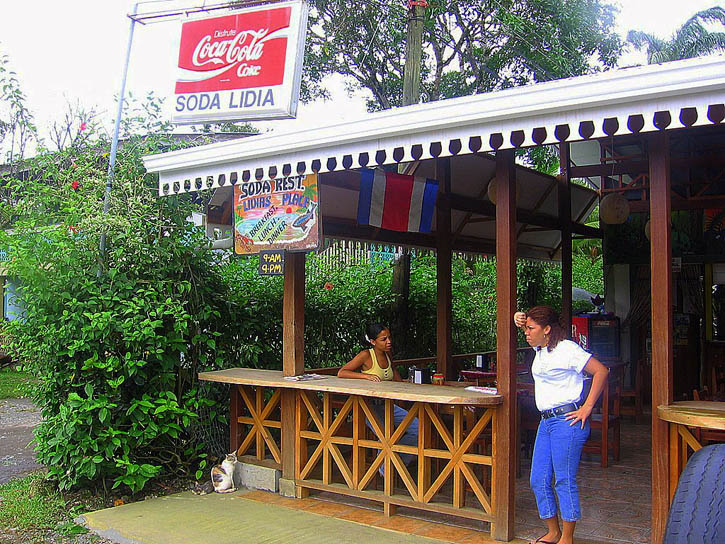Costa Rican cuisine is simple, and spices are shunned. Comida típica, or native cuisine, relies heavily on rice and beans, and “home style” cooking predominates. Gallo pinto, the national dish of fried rice and black beans, is ubiquitous, including as a breakfast (desayuno) staple. Many meals are derivatives, including arroz con pollo (rice and chicken) or arroz con tuna. At lunch, gallo pinto becomes the casado (literally “married”), a cheap set lunch plate of rice and beans supplemented with cabbage-and-tomato salad, fried plantains, and meat. Vegetables do not form a large part of the diet.

Ceviche, made from marinated seafood and often served chilled, is a popular island dish. Photo © Clay Junell, licensed Creative Commons Attribution Share-Alike.
Eating in Costa Rica doesn’t present the health problems that plague the unwary traveler elsewhere in Central America, but you need to be cautious.Food staples include carne (beef, sometimes called bistec), pollo (chicken), and pescado (fish). Beef and steaks are quite lean—Costa Rican cattle is grass-fed and flavorful. Still, don’t expect your tenderloin steak (lomito) to match its North American counterpart.Seafood is popular—especially sea bass (corvina), mahimahi, shrimp (camarones), and lobster (langosta). Light and flavorful tilapia (African bass) is increasingly popular, especially served with garlic (al ajillo). Marlin and sailfish are regional specialties at local restaurants. Ceviche is also favored, using the white meat of corvina steeped in lemon juice mixed with dill or cilantro and finely cut red peppers. Guanacaste province is noted for its local specialties, especially dishes based on corn.
Eating in Costa Rica doesn’t present the health problems that plague the unwary traveler elsewhere in Central America, but you need to be cautious. Always wash vegetables in water known to be safe, and peel any fruits you eat. Otherwise, stick to staples such as bananas and oranges.

Sodas—open-air snack bars serving typical Costa Rican food—serve working-class fare. Photo © Gilbert Corrales Villalobos, licensed Creative Commons Attribution Share-Alike.
Sodas, open-air lunch counters, serve inexpensive snacks and meals. In San José, restaurants serve the gamut of international cuisine at reasonable prices. Hoteliers and gourmet chefs have opened restaurants of note in even the most secluded backwaters. On the Caribbean coast, the local cuisine reflects its Jamaican heritage with spiced specialties such as johnnycakes, curried goat, curried shrimp, and pepper-pot soup.
Many bars serve bocas—savory tidbits ranging from ceviche to tortillas con queso (tortillas with cheese)—with drinks. Some provide them free, as long as you’re drinking. Turtle (tortuga) eggs are a popular dish in many working-class bars. Most towns have Saturday-morning street markets (ferias de agricultor). Even the smallest hamlet has its pulpería or abastecedor—local grocery store.
Excerpted from the Tenth Edition of Moon Costa Rica.